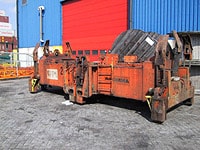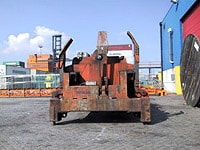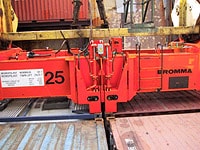Refurbishment
Refurbishment can add several years to the lifetime of a spreader and may be a sound economic decision in some cases.
However, it is important to bear in mind that the viability of refurbishment is affected by many different factors. And while components and systems can be returned to factory specifications, it is not possible to undo wear and fatigue of the steel structure, which is the main limitation in most refurbishment scenarios.
Where refurbishment is indicated, the work should always be carried out by an expert partner. Bromma has unmatched spreader knowledge and experience. We have the capabilities to bring your spreader back up to the highest possible level of performance. And, most importantly, we can determine whether a refurbishment is likely to yield your desired return on investment.
A refurbishment project begins with a thorough inspection of the spreader structure, sub-systems and components. Typical areas for refurbishment include electrical and hydraulic components, end beams, flipper arms, twistlocks, telescopic chains and sliding pads. Curious about the economics of refurbishment? We will give you the full picture.
Evaluation of Spreader Condition
A refurbishment project begins with a thorough inspection of the spreader structure, as well as its sub-systems and components. The inspection determines the present fitness of a spreader and the suitability for refurbishment.
The below pictures show spreaders in Belgium before and after refurbishment.
Before refurbishment:

After refurbishment:

Refurbishment
The purpose with a spreader refurbishment is to extend the life span of your spreader. Typical areas for refurbishment include:
- New electric components
- New hydraulic components
- New end beams
- New flipper arms
- New twistlocks
- New telescopic chain and/or new sliding pads
Refurbishment can be performed in the terminal workshop or in a workshop nearby. Connect with your local Bromma representative to know more about Bromma spreader refurbishment.

